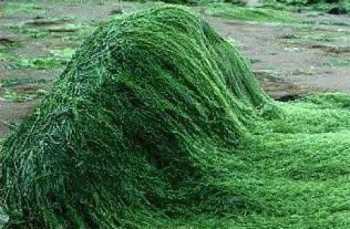
A protein-rich blue-green algae called Spirulina (referred to as "dihé" by locals) in Chad is allowing disadvantaged women to increase their incomes and reduce hunger in their home villages. The spirulina, which is gathered from the northeastern shore of Lake Chad, is helping to feed the 1 in 5 children in Chad who are malnourished. Traditionally, the algae is gathered by lower class women of the "Blacksmith" caste during certain times of the year. Normally it is prepared by drying the algae into a thin biscuit and subsequently turned into a bitter tasting paste.
In 2007, the European Union created a $1.7 million agency, which is now run by the UN Food and Agricultural Association, to provide education and equipment for the women on how to most efficiently gather, process, and market the algae. Since the agency began, more than 10 tons of the dihé has been sold to pharmacies and groceries around the country, resulting in over $100,000 in profits for the 500 women working at the project (around $200 per worker). The average per capita income in Chad is less than $170 per person.
Mahamat Sorto, the FAO coordinator for the project, claims that the dihé from the Chad soda-lakes is more nutritious than than the spirulina sold in developed countries and costs about 100 times less. Moreover, up to ten times more of the dihé can be gathered without adversely affecting the ecological balance of the algae. For the algae to grow, it needs brackish pools of water and a very specific type of climate that involves temperatures in the upper-90s (fahrenheit) during the day and the mid-60s during the night. Chad is one of the few areas in the world where this algae can grow.
-Matthew Thwaites
SOURCES: "Algae could combat hunger"-New World News, "Nutrient-rich algae from Chad could help fight malnutrition, Dihé boosts local women's incomes too"-Relief Web, "Nutrient-rich algae can boost Chadian women’s incomes and tackle malnutrition"-UN News




